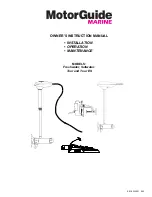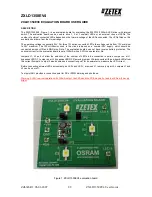
7.4
Connecting External Debuggers
Even though there is an on-board debugger, external debuggers can be connected directly to the PIC18F47K42
Curiosity Nano to program/debug the PIC18F47K42. The on-board debugger keeps all the pins connected to the
PIC18F47K42 and board edge in tri-state when not actively used. Therefore, the on-board debugger will not interfere
with any external debug tools.
Figure 7-5. Connecting the MPLAB PICkit
™
4 In-Circuit Debugger/Programmer to PIC18F47K42 Curiosity
Nano
2
3
4
5
6
7
8
1
MCLR
V
DD
Ground
DATA
CLOCK
3 = Ground
4 = PGD
5 = PGC
6 = Unused
7 = Unused
8 = Unused
2 = V
DD
1 = MCLR
MPLAB® PICkit™ 4
USB
DEBUGGER
PS LED
NC
ID
CDC RX
CDC TX
DBG1
DBG2
VBUS
VOFF
DBG3
DBG0
GND
VTG
CURIOSITY NANO
CAUTION
The MPLAB PICkit 4 In-circuit Debugger/Programmer is capable of delivering high voltage on the MCLR
pin. R110 can be permanently damaged by the high voltage. If R110 is broken, the on-board debugger can
not enter programming mode of the PIC18F47K42, and will typically fail at reading the device ID.
CAUTION
To avoid contention between the external debugger and the on-board debugger, do not start any
programming/debug operation with the on-board debugger through Microchip MPLAB
®
X or mass storage
programming while the external tool is active.
PIC18F47K42 Curiosity Nano
Appendix
©
2019 Microchip Technology Inc.
User Guide
DS50002899B-page 24





































